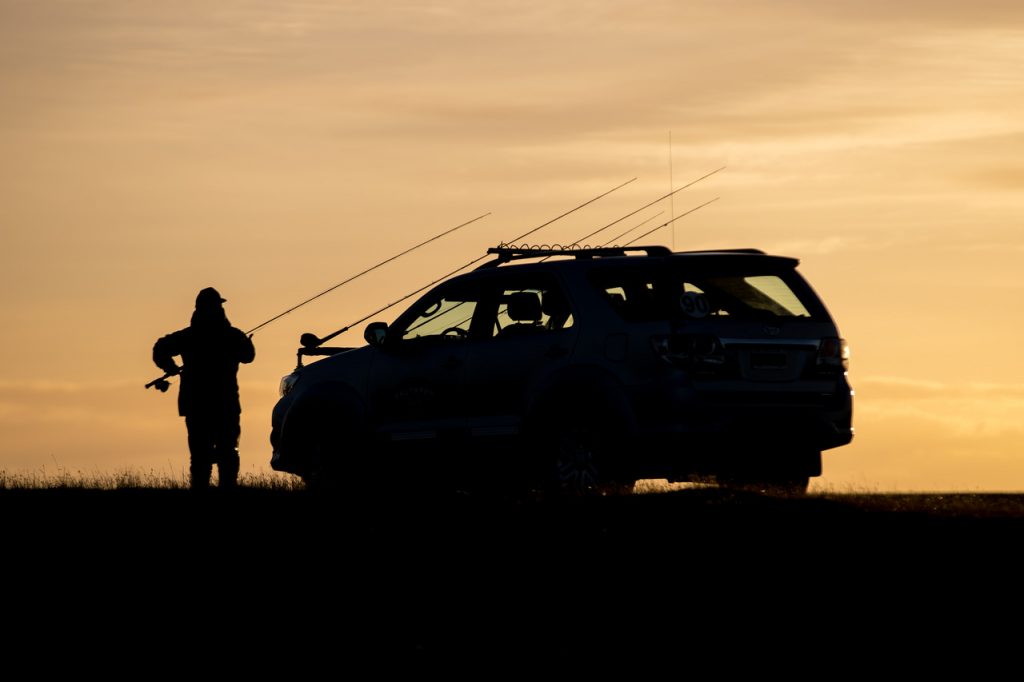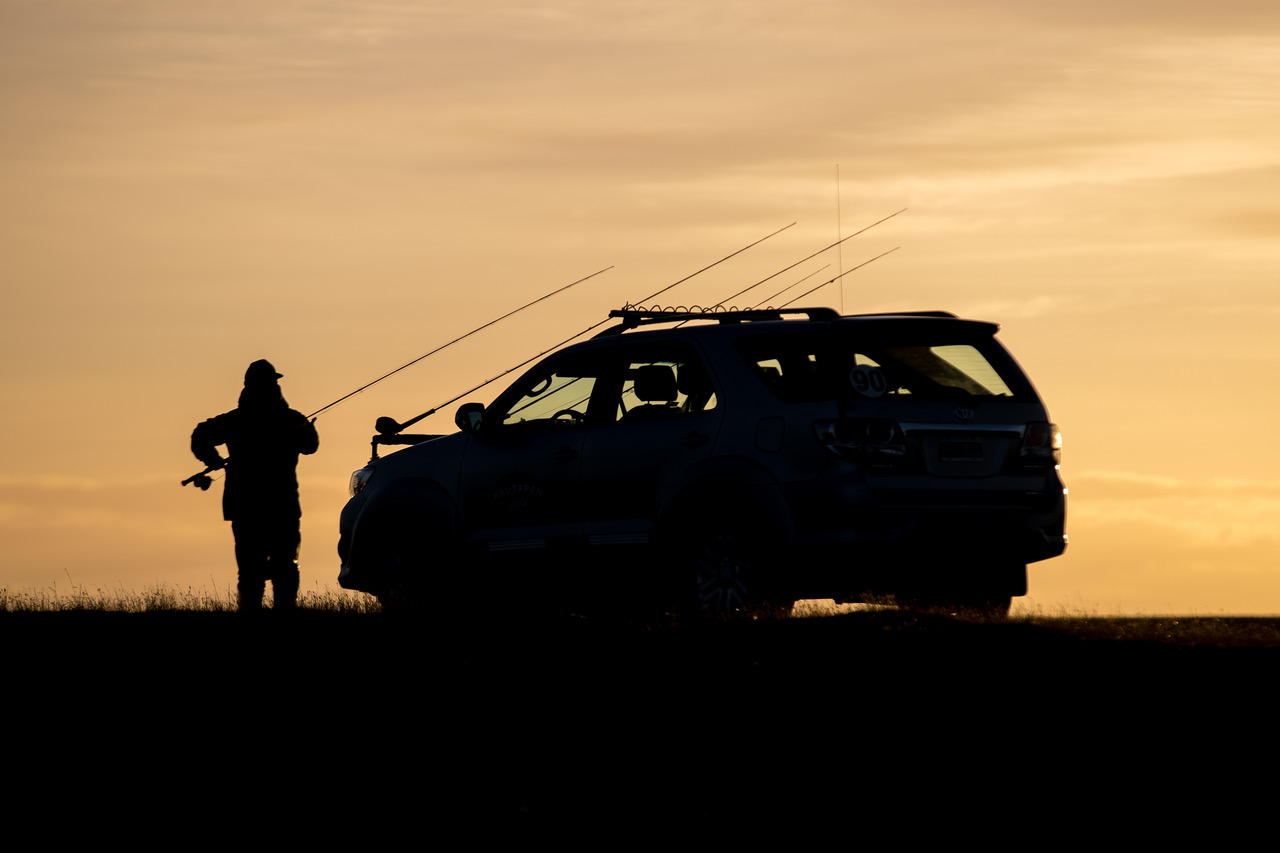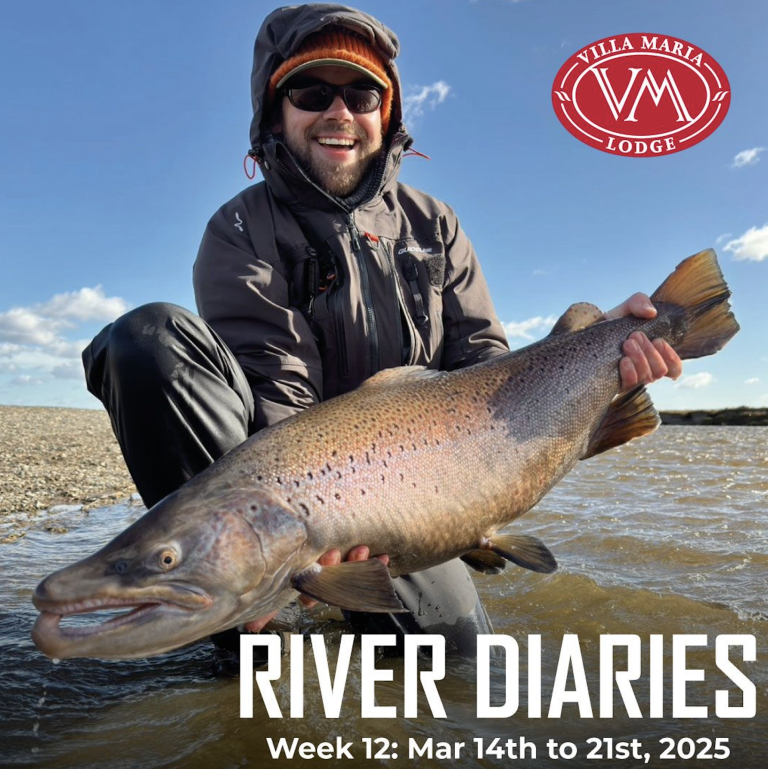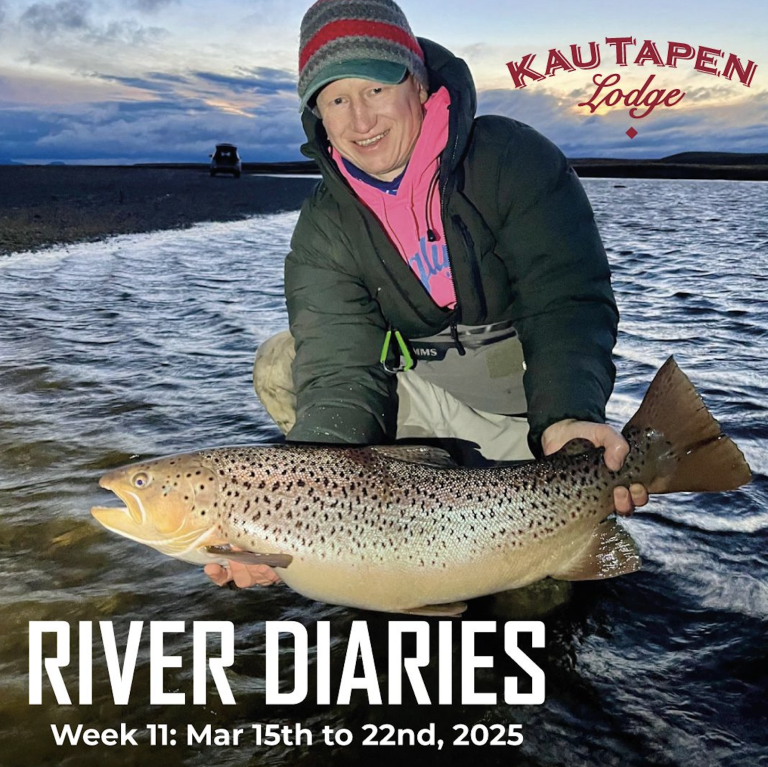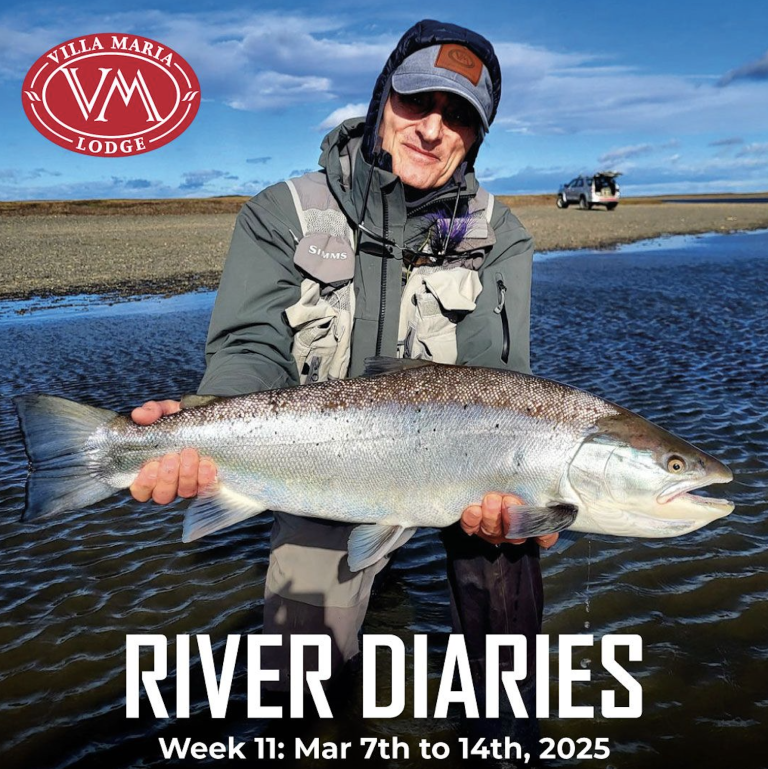Tierra del Fuego means land of fire. But “land of wind”, as many traveling anglers know, would be an equally appropriate title for this breathtaking part of the world. When it chooses to blow hard, casting can become more complicated. With the right equipment and the proper technique, however, a blustery forecast can be easily conquered.
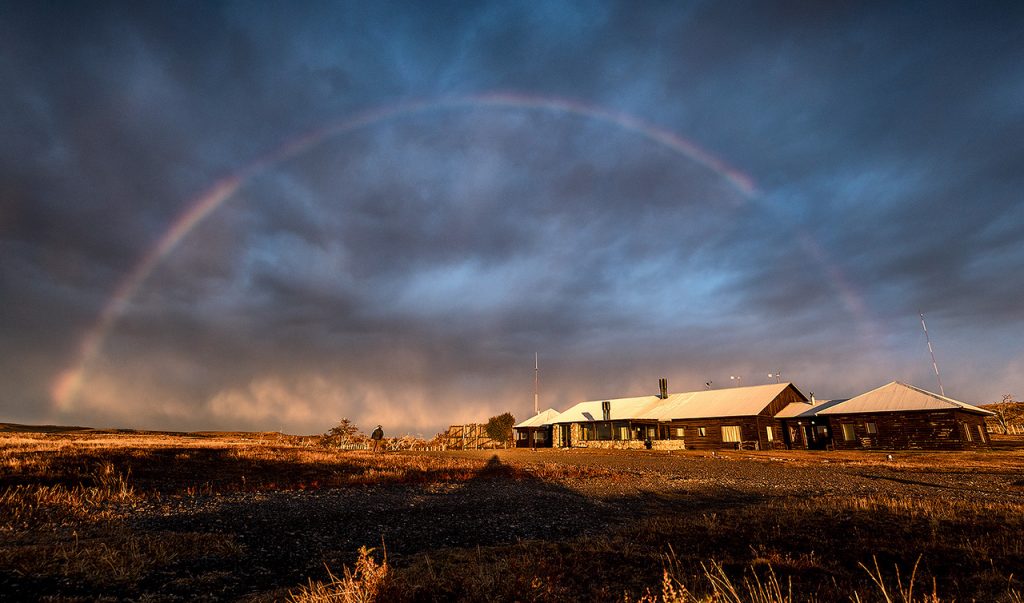
Casting in Windy Conditions
Casting into or against the wind is a tiresome task. Fortunately, the beats at Kau Tapen, on the upper river, and Villa Maria, on the lower, have enough water on both banks that you can generally switch sides when needed, keeping the gusts at your back, rather than in your face. Because the wind here comes predominantly from the west, it follows the river corridor downstream, which benefits right-handed casters when it comes to both distance and presentation. But while the river meanders from left to right, leaving fishy cutbank pools at every turn, there will inevitably be occasions when the wind works against you.
Being able to switch from right- to left-handed casting helps minimize problems. Another tip to consider: Keep your backcast low, and finish with the forward stroke high. A shorter spey rod or a switch rod helps with the latter by allowing for more compact D-loops, and more consistent anchor placements. A slow, wide D-loop, on the other hand, gives the wind more time and space to blow the line away, with can compromise your cast/presentation.
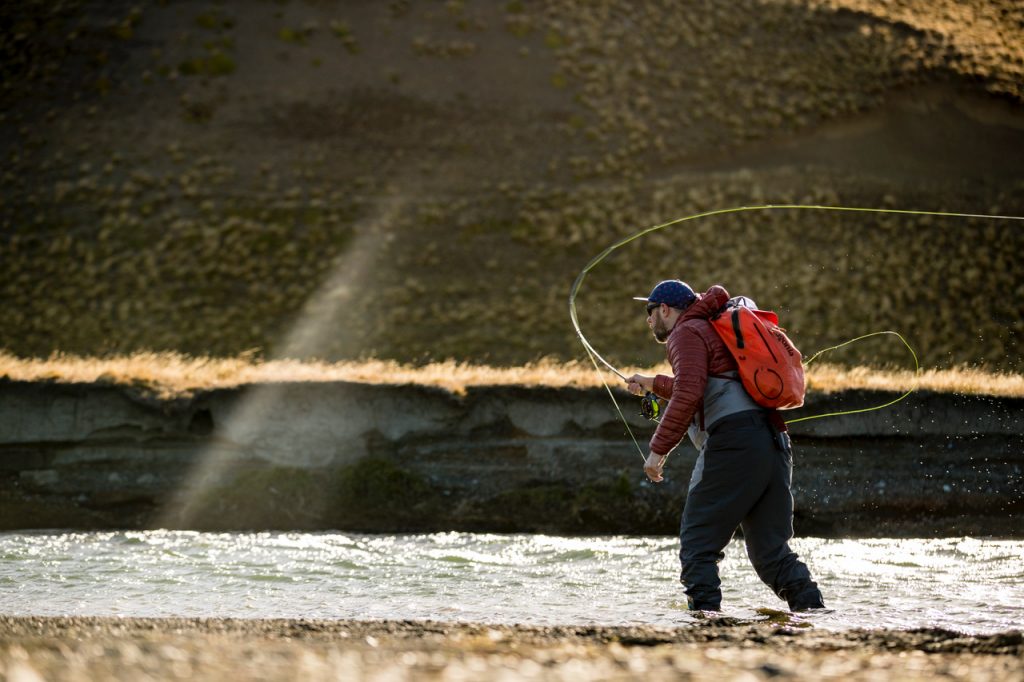
For me, the ideal spey rod for windy conditions will handle a compact, slightly overweight shooting head that doesn’t give the wind time to mess everything up. Rods between 11 and 13 feet work great. A deep-loading, quickly recovering 7- or 8-weight is my preferred rod of choice, matched either with a short Scandi shooting head for normal conditions, or a short, heavier Skagit line for heavy tips and flies during high-water conditions.
I typically bring two spey rods to the river, one 7-weight rigged with a Scandi and lighter, tapered tips (like RIO VersiLeaders), and one 8-weight rigged with a Skagit and heavier T-tips. When the wind kicks up, I like to overload the rod with a slightly beefier head, one that’s rated at the upper end of your rod’s recommended grain-weight window.
These days, many spey anglers prefer mono shooting lines behind their shooting head (personally, I do too), but as distance is not the main goal here, a coated running line also works fine. Although coated running lines are easier to handle after the cast, they are also just a bit more susceptible in the wind, depending on your mending technique. I usually do more of a quick “reach-mend” to move the entire line in the desired direction, and that works well for me with any kind of running line. On a calm day, you might be better off with a coated running line, because the increased friction allows for a cleaner presentation with your slightly overweight line setup.
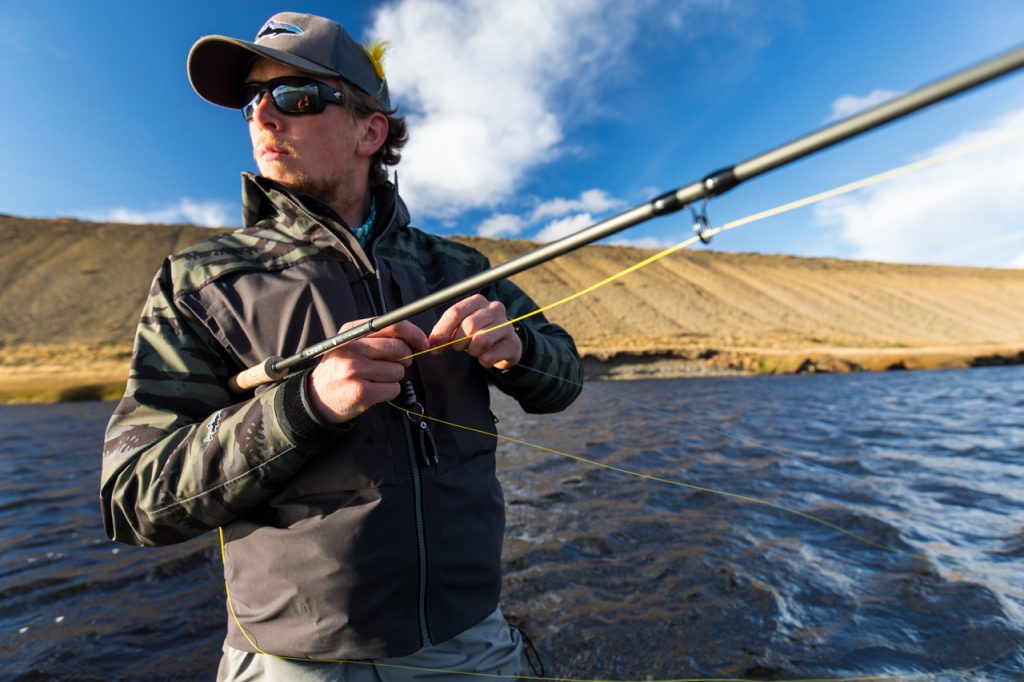
As mentioned earlier, the size of the river does not require a lot of casting distance. Spey rods are simply an easy way to make things easier in the wind. But, fishing single-handed rods can also be bliss on this river. Although a lot of false casting can be exhausting on a windy day, you can still cover most Rio Grande pools easily. The Rio Menendez, the river’s largest tributary, is also full of prime single-hand rod water.
In terms of single-handed rod length, the trend here runs contrary to the general shorter spey-rod rule. A slightly longer 7- or 8-weight rod is perfect, and my favorites include 9’8” 7-weights and 10’ 8-weights. The extra length gives you better line control on a longer swing. In terms of fly lines, going one class over the rod’s recommended line weight is a good approach in the wind. This helps minimize false casts, while enabling you to cast larger flies when needed. Even single-handed shooting heads will work. Proven lines include the Rio Outbound Short, the Loop Opti Stream, the Rio Streamer Tip, the Rio Single Handed Spey (for calmer days), and the OPST Commando Head for a shooting-head setup. Compact bellies with aggressive tapers are the best for windy conditions.
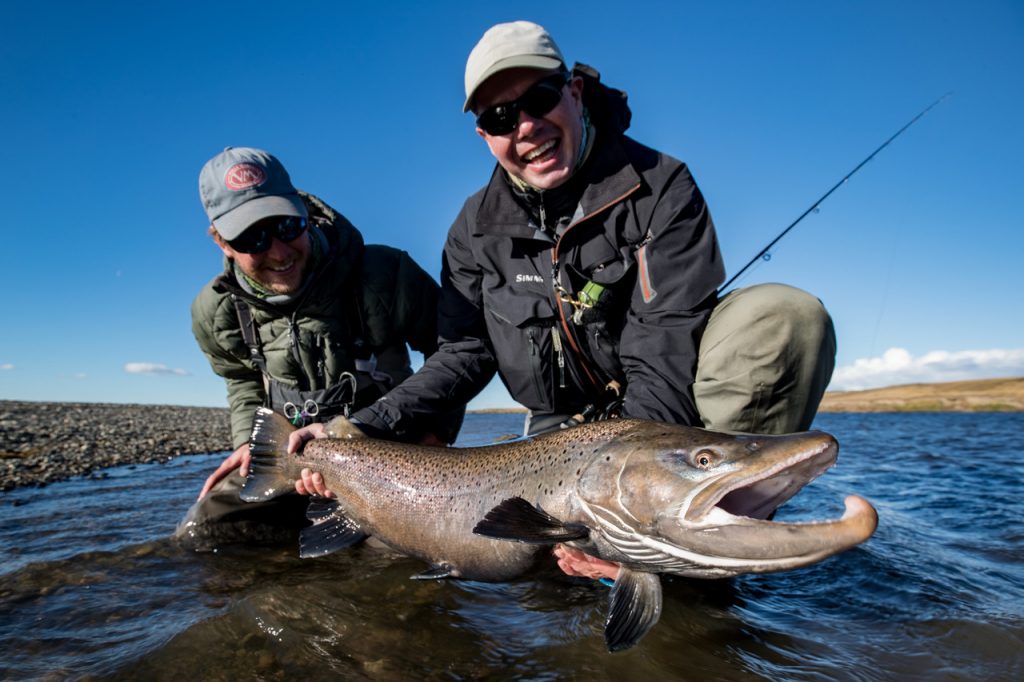
As far as reels go, to be honest this is a matter of taste. Reels should, however, balance your outfit, so choosing one that perfectly counter-weights your rod will make casting more pleasant. Sea-run brown trout will, most of the time, give you an explosive fight, rather than long-distance runs. Exceptions do occur, so putting some extra backing on your reel never hurts. Personally, I have never seen a reel get emptied by a sea-run brown. Even if it decides to head back to the ocean, you’ll be able to follow the fish downstream in most cases!
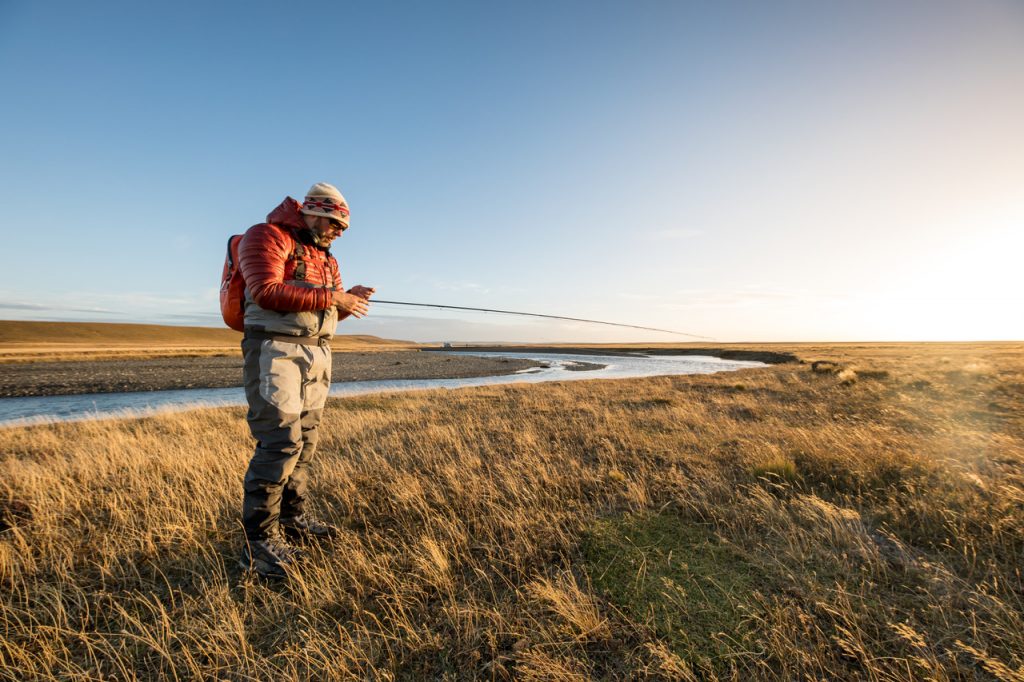
With the equipment mentioned above, prospective Rio Grande anglers are well prepared for almost all conditions. Bear in mind that being as effective as possible and catching as many fish and possible is not everybody’s aim; many Rio Grande regulars choose to fish this river because they get to fish whatever they like. From cane spey rods to vintage fiberglass single-handers, the Kau Tapen and Villa Maria guides have seen every imaginable fly-fishing kit. Fish confidently with what you feel most comfortable with, and don’t be afraid to experiment.
